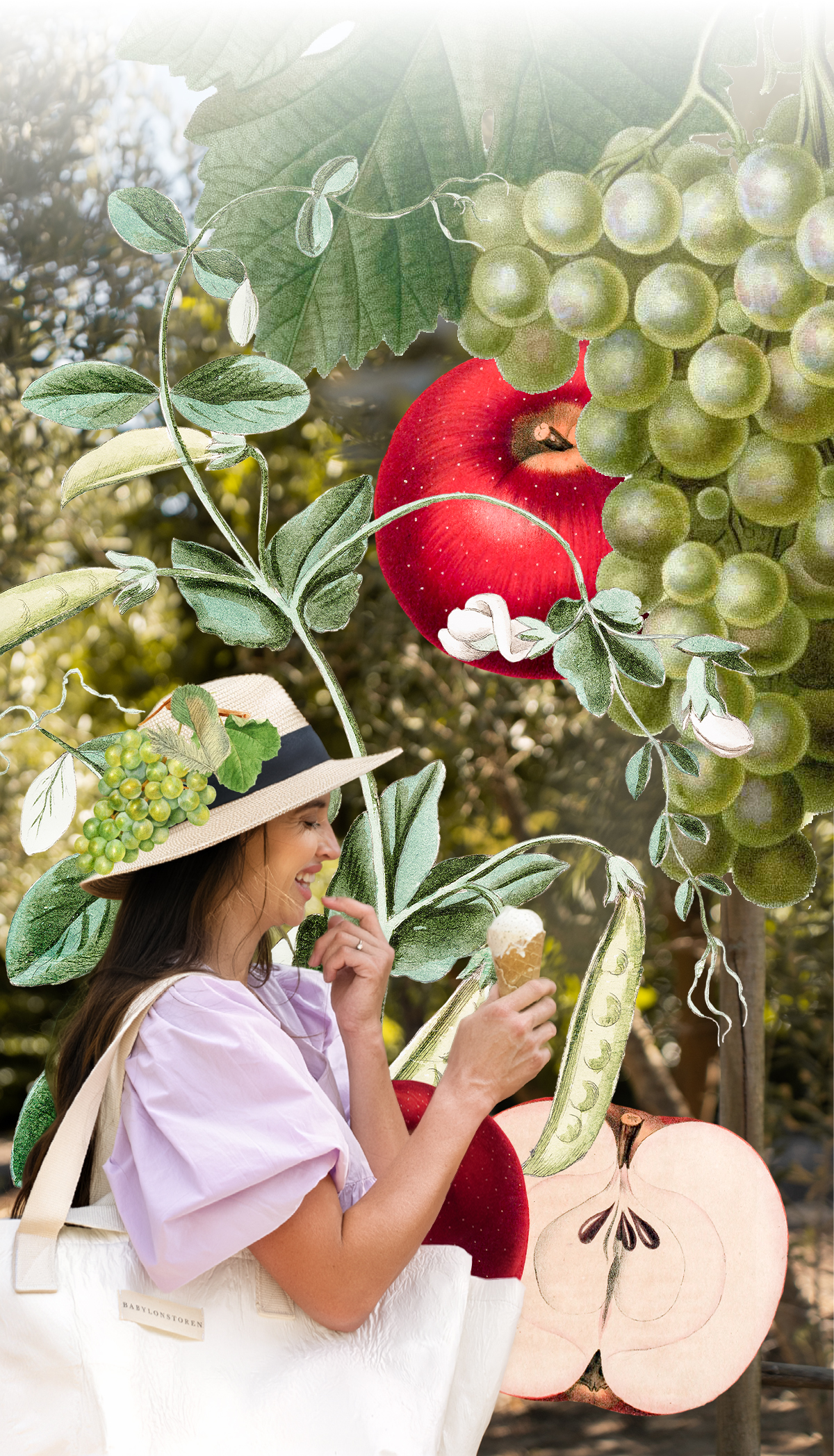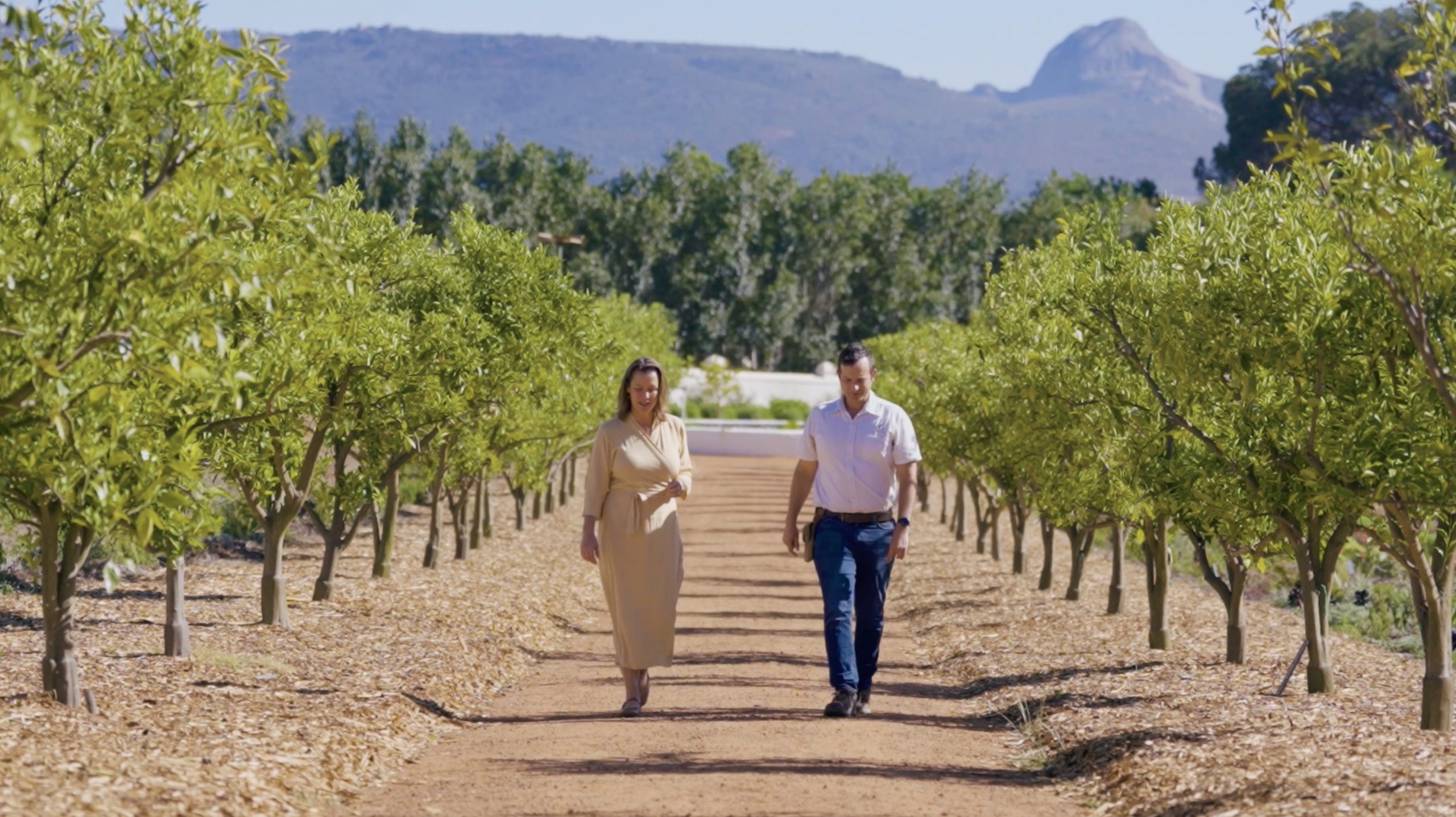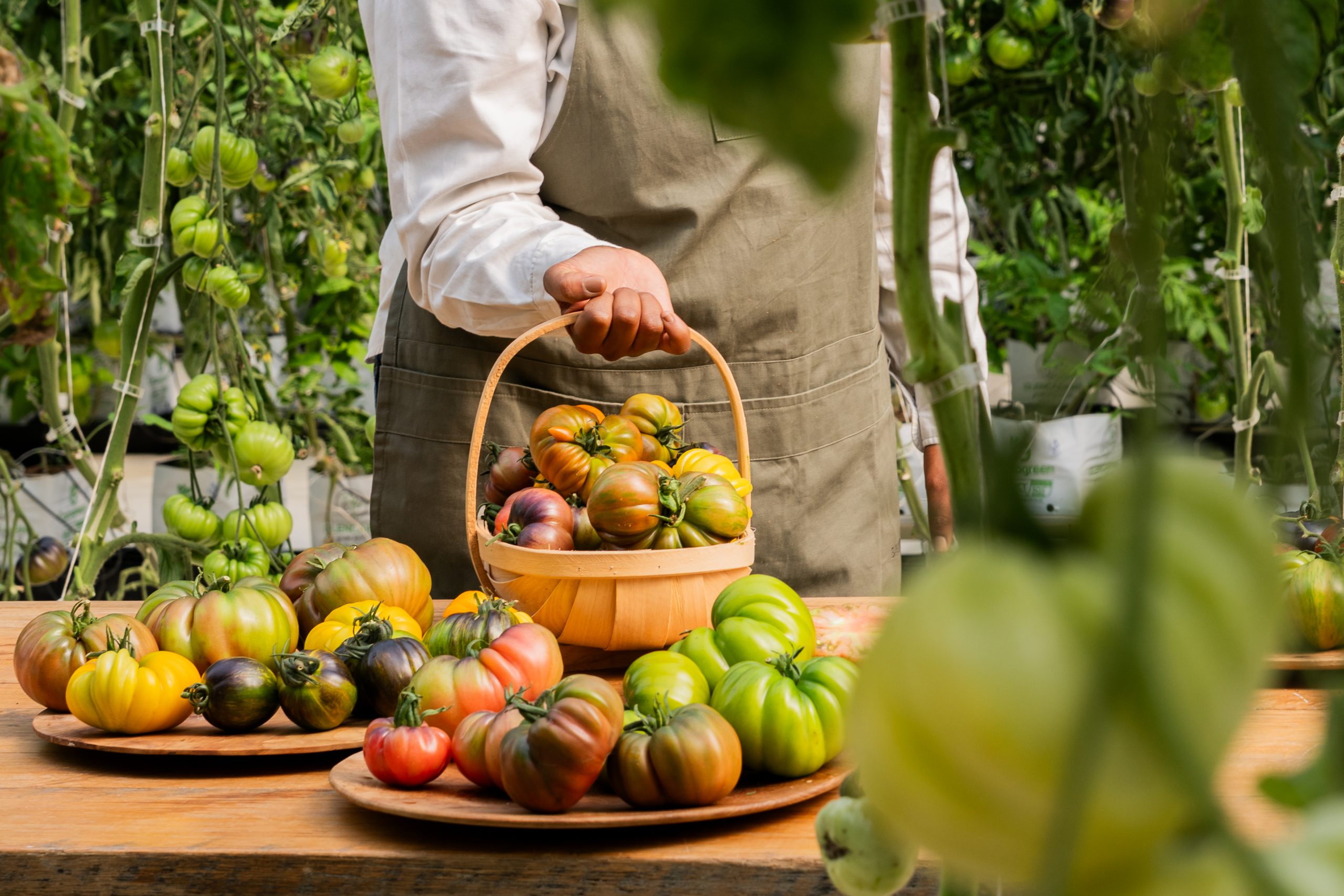Boland Risotto
May 5th, 2023It’s nearing a decade since the first carnaroli rice harvest was sickled from the paddy at Babylonstoren. Boland risotto … who would have thought?!
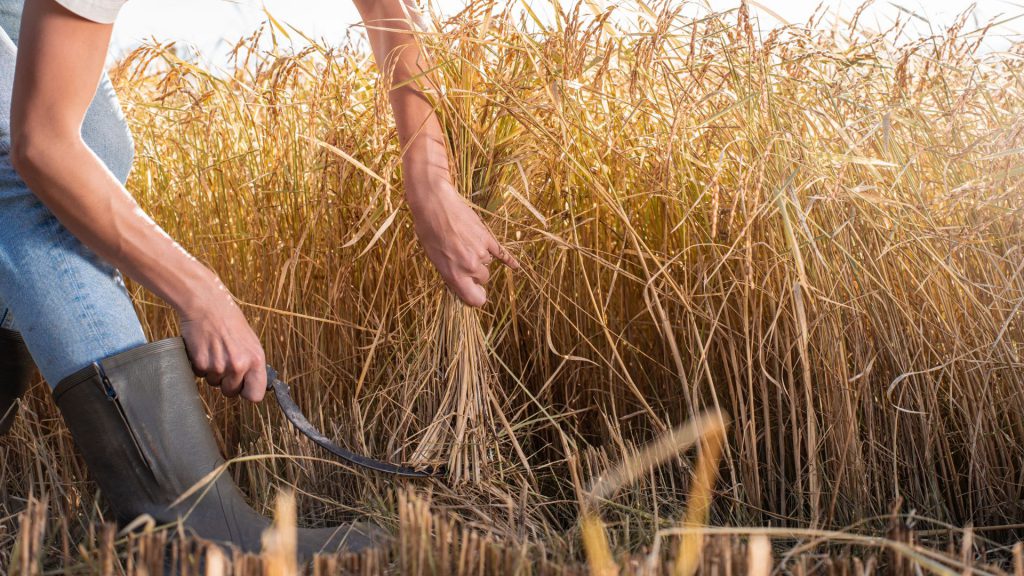
Carnaroli rice is traditionally cultivated in the north of Italy in the regions Piedmont and Lombardy. It is considered the “caviar of rice” and the risotto of choice for our Babel head chef, Schalk Vlok.
“I gained a deep appreciation for the product when I prepared for my first risotto workshop on the farm, and realised that each individual grain of rice has to be threshed by hand. To enjoy a bowlful of these grains in something as glorious as risotto is truly royal.”
Schalk Vlok, Babel Executive Chef
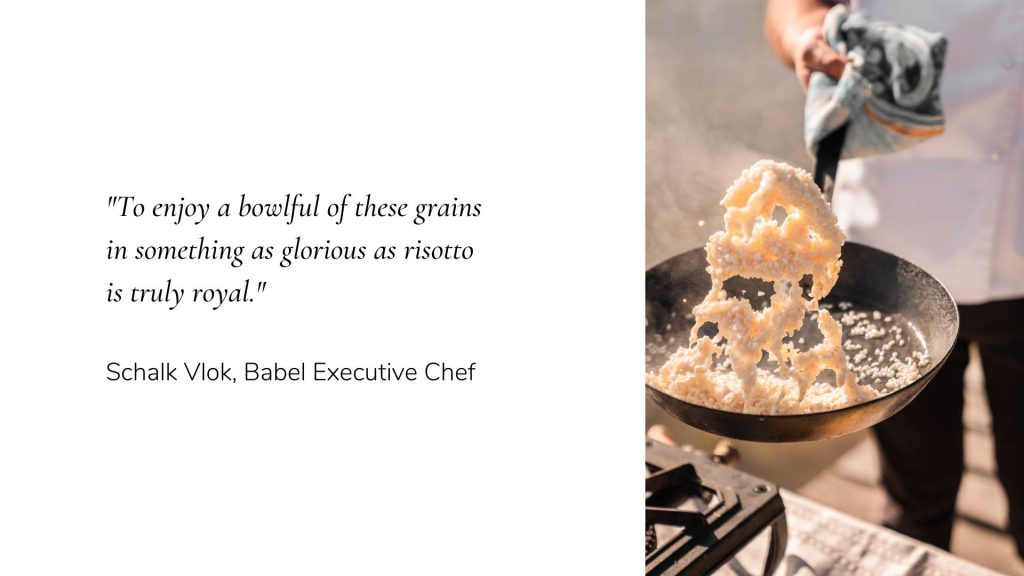
Carnaroli rice differs from more common arborio rice in that it has a higher starch content and firmer texture, as well as having a longer grain. It keeps its shape better than other forms of rice during the slow cooking required for making risotto. This means that even when stirring your rice to allow the stock to absorb, the integrity of the grain remains intact and you don’t end up with a bowl of mush!
5 tips to make the best, creamiest risotto
Chef Schalk believes in focusing on the best possible ingredients and then – Chef’s KISS – Keep It Super Simple!
◗ Start with a finely diced shallot with fresh garlic, thyme and bay leaf. And lots of butter.
◗ Use warm stock, not cold! It’s important to be patient and allow the stock to absorb fully into the rice before adding the next ladle.
◗ It is better to move the rice by moving the pan back and forth, creating a sort of wave on the surface. This method is called risotto all’onda meaning “wave rice”.
◗ Always leave the risotto runnier than you think it should be.
◗ To end, add a generous knob of cold butter and parmesan cheese and allow your risotto to rest. Mantecatura* makes all the difference, says chef Schalk.
* Mantecatura refers to the technique used for risotto, pasta or gnocchi to ensure creaminess. It involves getting a homogeneous and smooth mixture by adding fats or cooking water at the end of cooking process. The butter should be quite cold – or even frozen – since the thermal shock between hot rice and cold butter will release the buttermilk that contributes to produce that soft consistency typical of risotto all’onda.
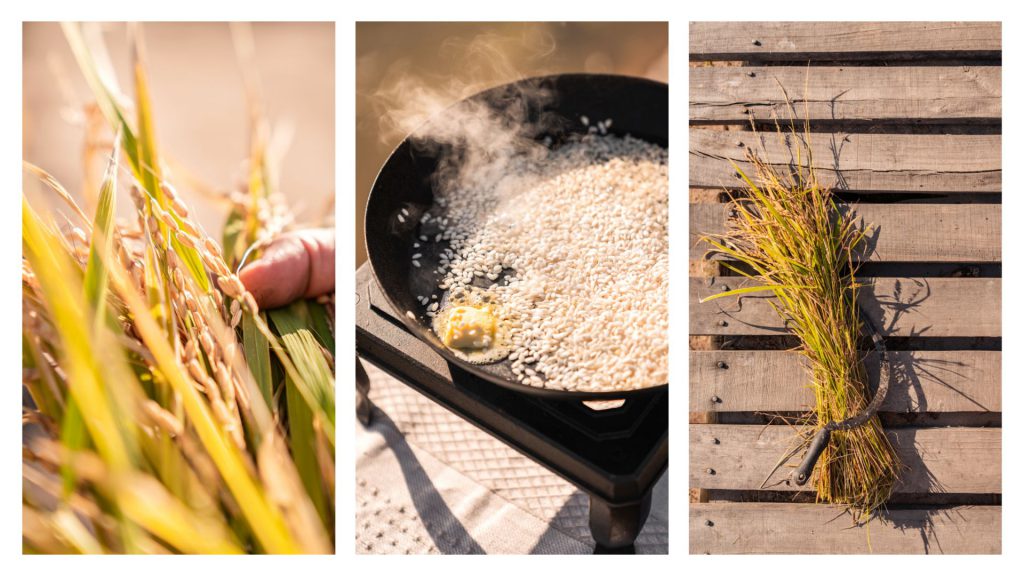
How to grow risotto
Growing rice, and especially risotto rice, is an agricultural endeavour associated with Italy and many other Asian countries – not South Africa. So to kick-start our carnaroli crop, we sought help from afar. Italian agronomist Attilio Dalpiaz advised the Babylonstoren crew on how to create the rice paddy. The first seeds were planted in October 2014 and our first harvest took place in March 2015.
Growing rice requires plenty of water. Once the seeds have been sown, they need to be thoroughly irrigated in the mornings and late afternoons until the seeds are fully germinated. When the plant reaches a height of about 30 cm, with four leaves, the paddy is flooded with water. We source ours from the vlei at Babylonstoren.
Rice grows in water about 30–40 cm deep and the paddy is filled up as the plant grows. As the risotto starts to ripen, the paddy is left to dry before the harvest starts, some 150 days after planting.
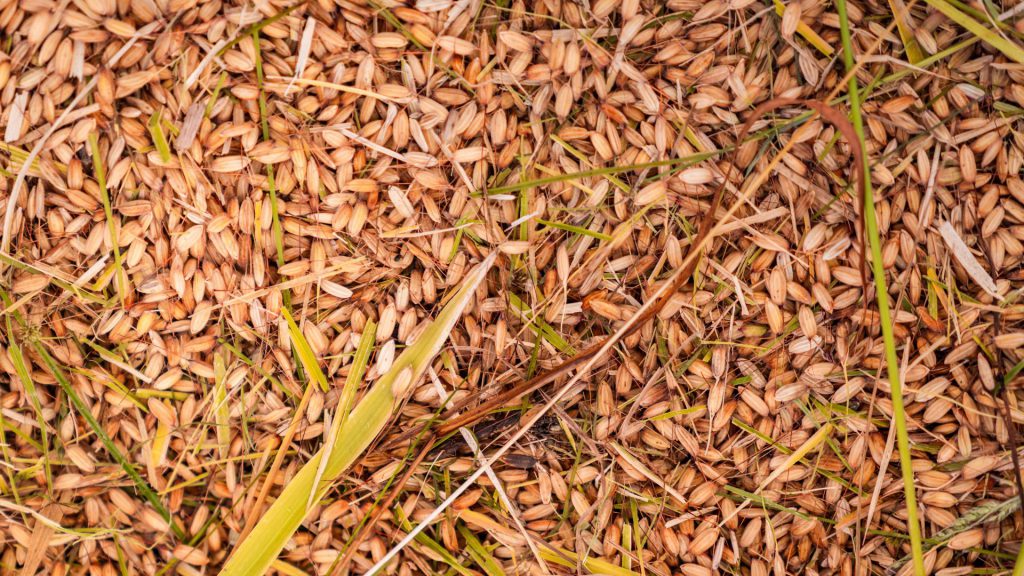
“The 2023 rice harvest took place early in April and was our most impressive thus far. We were able to smooth out a few struggling patches in the paddy to produce one of the best yields on the farm so far.”
Ian de Villiers, Babylonstoren farmer
This year’s harvest will supply Babel Restaurant with around 100 plates of our very own risotto.
